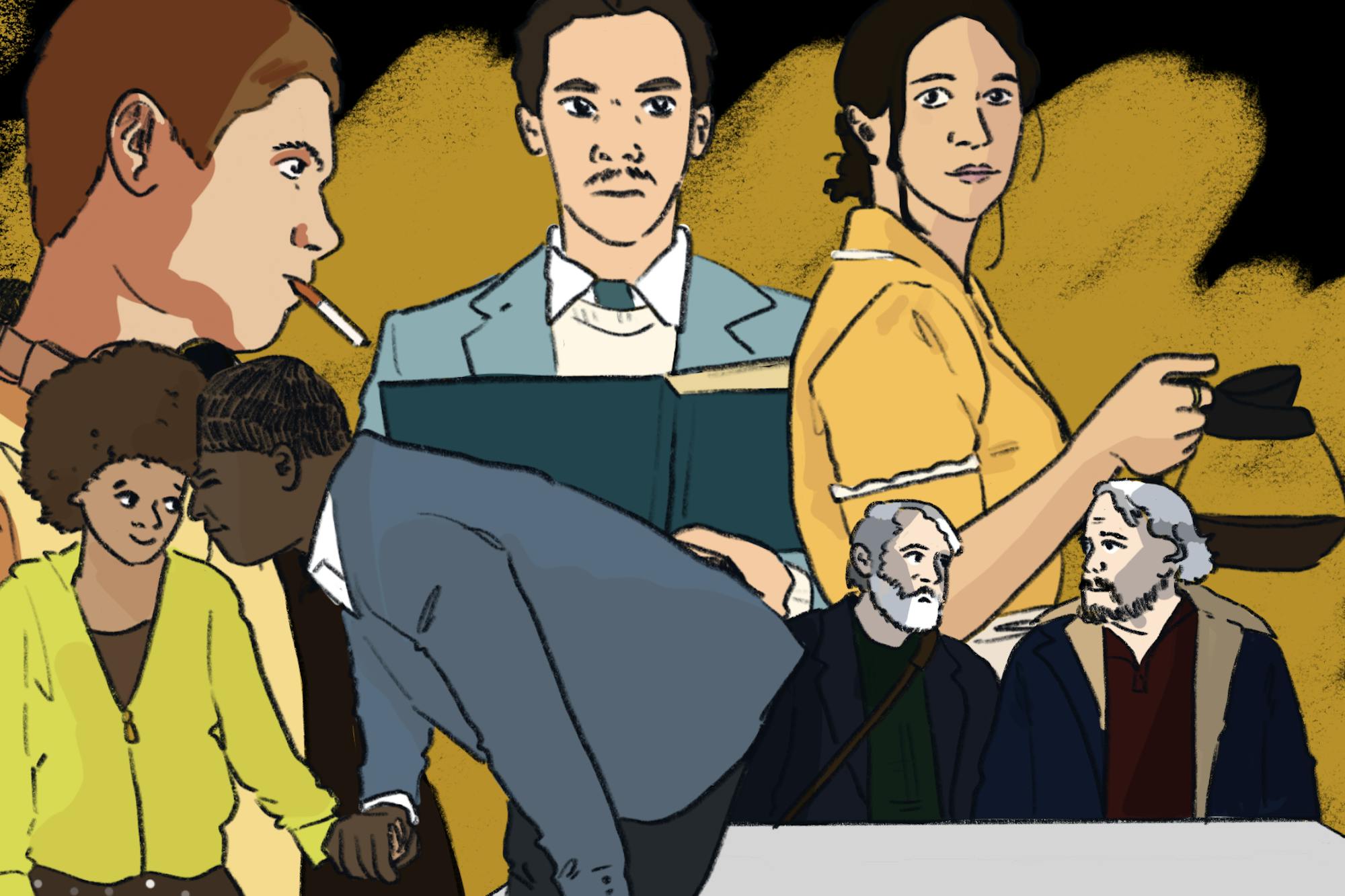This year’s Oscar-nominated, live-action shorts are some of the most compelling pieces of cinema that I have ever had the privilege of viewing. Each of the films shown at the Hopkins Center for the Arts’ screening of the program tells an unforgettable, emotional story that feels highly relevant amidst the tumultuous global events of today's world. The three shorts in this review gripped audiences for their ability to tell stories that showcase how characters process tragedy, trauma, and grief.
“The After,” directed by Misan Harriman
This short film begins abruptly and painfully. The audience is introduced to a beautiful family at the start of the film: a well-off husband, Dayo, and his wife, Amanda, who have a young daughter. But just as the viewer begins to familiarize themselves with the lives of the family members, a heinous, grotesque act of violence kills the mother and the young daughter.
These are the first few minutes of the film. And then “The After” begins.
The rest of the film focuses on the aftermath of this tragedy. How can Dayo, after his wife and daughter have been senselessly murdered, find meaning in his day-to-day life? The film that proceeds is tedious, almost painful to watch — and rightfully so. Several long shots show Dayo crying, sitting with glazed eyes in the driver’s seat of his car. The world seems to be spinning without him. In the final scene of the film, Dayo falls onto the sidewalk crying after receiving a hug from a little girl who resembles his murdered daughter.
Why make a film that focuses on the aftermath of a tragedy rather than the tragedy itself? The unconventional structure of the film was an entryway into the film’s overall message. By emphasizing the emotional aftermath of the tragedy, the film centers around Dayo’s search for meaning in a world tragedy has shattered. To me, the purpose of creating such a film that stresses the importance of coping with grief, loss and trauma gives power to the act of emotional healing. It gives Dayo’s difficult emotions a voice and portrays his attempts to work through them as deeply meaningful. We are told that the struggle of accepting a new reality is a story that is worth telling.
In “The After,” healing is portrayed as an act of strength. It is a practice that does not occur solely within the length of a short film or even a feature-length film. Dayo’s recovery timeline will not be orderly, nor will it conclude in the duration of the film — it will last a lifetime. And despite only getting a glimpse into “The After,” we, as the audience, will also feel the father’s pain even after the film ends. But we also leave the film with the understanding that our emotional healing, too, is a story that is worthy of being told.
Rating: ★★★★★
“Red, White and Blue,” directed by Nazrin Choudhury
This film centers around the struggle to receive an abortion in rural America — a subject that is not only timely but highly political. But “Red, White and Blue” shifts the emphasis beyond the political nature of the topic. Instead, it portrays the heartbreaking circumstances surrounding sexual assault victims and the aftermath of the physical, emotional and mental trauma that is endured.
“Red, White and Blue” features a young mother who, it initially seems, is trying to receive an abortion because of her financial instability. However, after distressing depictions of sexual abuse, financial hardships and poor living conditions, the film reveals a shocking twist: It is not the mother who seeks the abortion but rather her young daughter, who, at around just 10 years old, wasis the victim of a violent rape.
This disturbing realization highlights the difficult reality surrounding victims of sexual assault who seek abortion procedures in rural America. While the film does take some liberties to create this dramatic reveal, the emotional impact it had on the audience could only be described as absolutely gut-wrenching.
This is a film that needs to be seen not only in America but also worldwide. “Red, White and Blue” is a landmark film that humanizes victims of sexual assault and tells a story that often goes unheard for millions around the world.
Rating: ★★★★★
“Ridder Lykke (Knight of Fortune),” directed by Lasse Lyskjær Noer
This Danish short film explores grief and coping with loss through the power of humor. A bereaved man, Karl, cannot bring himself to open his late wife’s casket for the last time. It is through this struggle that he encounters another bereaved man, Torben, and they begin an unlikely and strange friendship. Torben has frequented this funeral home for the past three years. Because the body of his deceased wife was never found, Torben pretends every corpse in the funeral home is his late wife, in hopes of finally achieving closure.
The film includes a strange juxtaposition between comedic scenes — which involve toilet humor, awkward encounters with other bereaved individuals and slapstick humor — with scenes featuring profound grief. While I appreciated the film’s message that grief can be the catalyst that forms tight-knit bonds with others, I found the juxtaposition between serious moments and humorous ones to be extremely jarring — almost as if I were experiencing emotional whiplash between each scene. Beyond its untimely, ironic situations, the film suffers from a lack of visual interest: The film’s set and light design are intentionally pale, sterile and bland throughout the entirety of the film — making it difficult to watch.
One adjective on the Hop website used to describe this film is “absurd.” In every sense of the word, I would have to agree.
Rating:★★★☆☆




